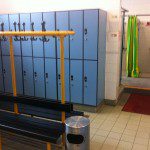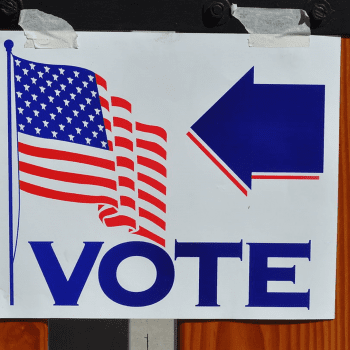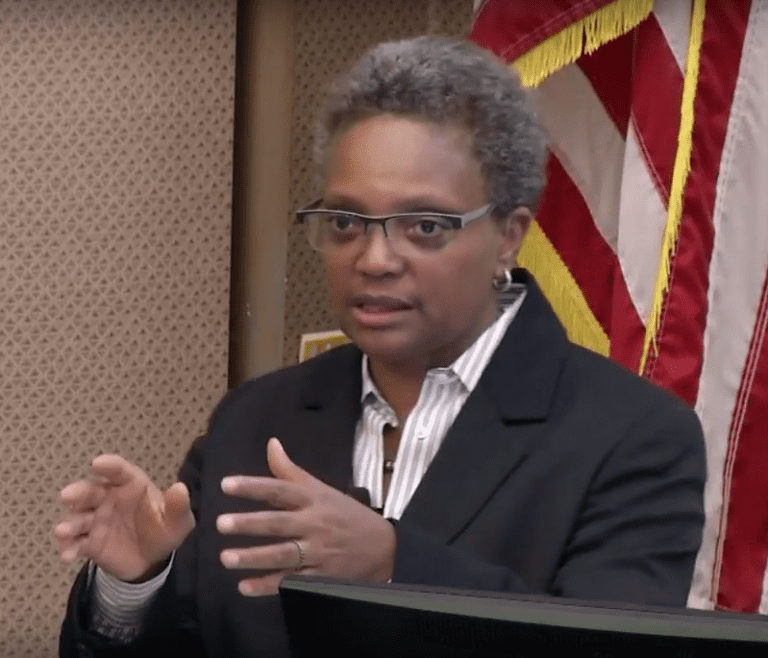Here’s an update on Chicago politics for non-locals.
Two years ago, George Lucas announced that he planned to build a “narrative art museum” in Chicago, located on the lakefront in the place of an existing parking lot south of Soldier Field, which itself is just south of the city’s “museum campus.” (See Wikipedia for a brief recap.) Lucas even promised that he would build the whole thing at no cost to taxpayers (see this NBC article from last year), which seems like a pretty good deal. Concerns were raised about the futuristic appearance of the proposed design, but, hey, Chicago’s getting a free museum. And concerns were raised that the collections to be housed there, reportedly worth $1 billion, would become dated, and attendance would drop as Star Wars faded into obscurity — though reportedly, the Lucas collection is more wide-ranging than just memorabilia from his movies, and, hey, if you’ve got the space, there’s no reason why the museum couldn’t, in the future, re-invent itself.
Trouble is, the infill part of the lakefront is legally required to remain undeveloped, though existing buildings are grandfathered in. This was an issue several years ago when the Chicago Children’s Museum wanted to relocate from Navy Pier to Grant Park, and ended up with, before they abandoned their pursuit, a plan to build virtually entirely underground.
And again here, the Friends of the Parks have sued the city. It’s just a frickin’ parking lot, so you’d think this would be laughed at, but their claim has always been that a parking lot qualifies as “open space” and, after all, someday the parking lot could be converted into grassy parkland in a way that a building could not. Which is nonsense, of course — but nonetheless, they’ve so far succeeded in the courts.
The Chicago Tribune summarized the legal situation in an article on Tuesday:
U.S. District Judge John Darrah twice has rejected City Hall motions to dismiss a lawsuit brought by an advocacy group, Friends of the Parks. The group argues that this project violates the public trust doctrine, a legal principle significantly expanded by the Illinois Supreme Court 30 years ago — after the existing lakefront museums were built.
A background point we’ve made before: By law both proposed museum sites are submerged lake bottom and have special protections. The state of Illinois, not the city of Chicago, holds title to the land — not with a traditional landowner’s right but as a trustee with fiduciary responsibility to every resident of Illinois. If you’re a citizen, you own what’s called a fractional beneficial interest in this public trust land. You can use it.
Judge Darrah wrote in March 2015, citing federal case law, that the purpose of the public trust doctrine is “to police the legislature’s disposition of public lands.” He noted that state lawmakers can’t relinquish control of such land “to satisfy a private interest.” And in a February 2016 ruling, Darrah added that Friends of the Parks “have sufficiently pled that the proposed Museum is not for the benefit of the public but will impair public interest in the land and benefit the Lucas Museum of Narrative Art and promote private and/or commercial interests. … Plaintiffs have plausibly stated a claim for a violation of the public-trust doctrine.”
Do I agree with this ruling? It seems a bit foolish to deem a museum meant for the public to be a “private interest” but I neither have nor am going to hunt down the particulars of this case, and what specifically led the judge to conclude that this was fundamentally Lucas’s “interest” and not a public interest, and it’s irrelevant to the more recent, and more disturbing, development.
Because Rahm Emanuel has come up with a new solution: if the museum can’t be built on a parking lot, then he’ll build it on the footprint of an existing building. The plan is, according to the Tribune,
one that would see McCormick Place’s Lakeside Center torn down, the futuristic-looking museum built in its place and a new convention building added west of Lake Shore Drive.
And the cost? $1.2 billion.
Let that sink in. We’ve gone from a museum that was promoted as being a no-cost addition to the city’s cultural collection, to a $1.2 billion pricetag for a city that can ill afford it.
The pricetag breaks down into “$665 million . . . to tear down the aboveground portion of the lakefront convention center building, build the new museum, reconfigure the below-grade space and add open space to the site,” and “$500 million . . . to construct a “bridge building” over Martin Luther King Drive that would link two other McCormick Place buildings, upgrade space in the other remaining buildings and replace parking spaces that would be given to the Chicago Park District and the Lucas Museum.
Of course, Rahm Emanuel claims it’s still “free” — because the taxes that’ll fund it are ones that “outsiders” pay. Here’s the Tribune’s funding breakdown:
Emanuel wants the state to extend the life of a 2 percent hotel tax, which now brings in about $45 million a year, from its expiration at the end of 2032. Currently, the money from that tax is used to repay the loans used to pay for U.S. Cellular Field, the home of the White Sox. Emanuel wants to continue the tax until 2066 to help pay off a new 40-year bond issue and provide some cushion, said Lori Healey, CEO of the Metropolitan Pier and Exposition Authority.
The mayor also wants four taxes used to fund McPier to be extended an extra six years, until 2066 instead of 2060. Those taxes — 2.5 percent on hotels, 1 percent on downtown restaurant tabs, a 6 percent tax on car rentals and $4 on taxi rides out of O’Hare and Midway airports — now bring in about $148 million a year.
The city also wants the state to continue paying the authority up to $15 million a year to subsidize convention shows that generate revenue throughout the region. That subsidy would expire in 2023, Koch said.
In addition, Lucas would still pour $743 million from his moviemaking fortune into the project, as he planned to at the initially proposed site south of Soldier Field, Koch said. Lucas’ money would pay debt on the borrowing for the first 16 years of the bond issue, Koch said.
This is horrifying. Note also that these are taxes, for the aim of funding this project, that run 50 years into the future, long before which point the “McPier” authority will be asking for even more money because the existing building will be deemed in need of renovation.
Yes, it’s unfortunate to have to pass on the museum, and, apparently, any new museum at the lakefront, ever. The Loop is the center of the city, it’s where all the tourists are, and it’d be a tough sell to get them to go elsewhere in the city, much less all the vacant sites where city promoters would like to have a museum. (Even Obama wasn’t willing to go to another site besides prime city parkland, though at least he didn’t try to claim lakefront land.) And absent a major redevelopment project elsewhere, there’s not another obvious location where a grand museum could be built, with the vistas you get from a lakefront building.
But $1.2 billion?
Rahm Emanuel promised competence, and gained the votes of a city tired of such fisacos as the 75-year parking meter lease, and the 99-year Skyway lease (which, a Tribune article from 2007 informs readers, went to pay off debts and fund the operating budget). He’s engaged in bitter fights with the teacher’s union over funding.
But instead of the fiscal responsibility he’s promised Chicagoans: $1.2 billion.
$12. billion.
Image: https://commons.wikimedia.org/wiki/File%3AChicago_Lakefront.jpg; By Daniel Schwen (Own work) [CC BY-SA 4.0 (http://creativecommons.org/licenses/by-sa/4.0)], via Wikimedia Commons


![https://commons.wikimedia.org/wiki/File%3AChicago_Lakefront.jpg; By Daniel Schwen (Own work) [CC BY-SA 4.0 (http://creativecommons.org/licenses/by-sa/4.0)], via Wikimedia Commons](https://wp-media.patheos.com/blogs/sites/533/2016/04/Chicago_Lakefront-1024x346.jpg)










